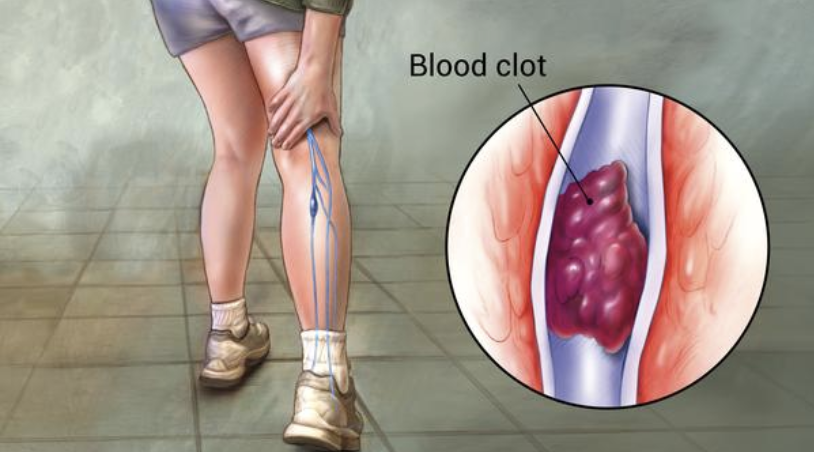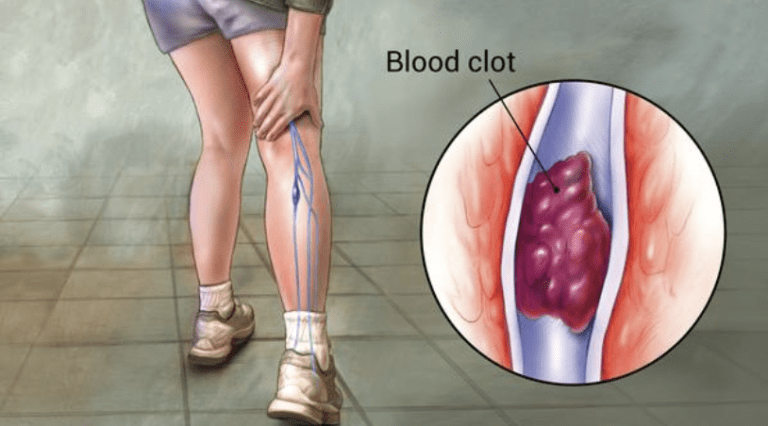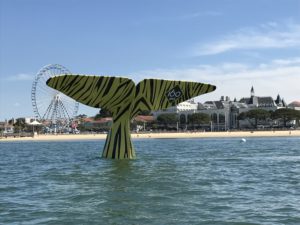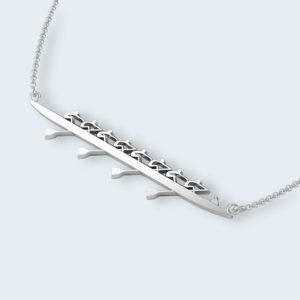I am a 55 year old male who started rowing at school when I was 12; I had my first DVT (deep vein thrombosis) at the age of 30.


I had typical symptoms – painful, swollen calf that was warm to the touch. It was misdiagnosed as a calf muscle strain due to being young and fit. I was placed on Coumadin for 6 months and never thought anything about it. The doctor wasn’t too concerned. It was just an anomaly as far as he was concerned. Since that time my right calf was always bigger than the left calf with increased swelling especially by the end of the day. Again, I was told not to be concerned. I later learned through a healthcare practitioner (my wife!) who specializes in lymphatic drainage that the possible reason for the continued swelling was due to damage caused by the clot which is not uncommon if it was a sizeable clot.
By 2016, my usual workouts were becoming difficult.
My erg splits were going up and I had difficulty getting enough oxygen per stroke. I would climb a flight of stairs and become short of breath. I went to my PCP who knew of my prior medical history and was told there was nothing wrong. After 6 months and several visits to my doctor, I was referred to a cardiologist for no reason other than my doctor had no answers.
In January 2017 I saw the cardiologist and explained my symptoms. I did not have “typical” DVT symptoms as I did 25 years previously and I was deemed “heart healthy”. Being aware of my past medical history, he wanted to do one test to rule out a possible DVT even though he thought it was unlikely I had a DVT. The test was overwhelmingly positive. I was rushed to the hospital to discover I had extensive DVT in my right femoral artery causing 99% occlusion, a smaller DVT in the left calf and three pulmonary emboli. I was placed on Warfarin and will remain on it for life. After extensive testing and consulting with different haematologists, I have no blood abnormalities and do not have a genetic predisposition to clotting.
Rowing and DVT
Although my doctors do not know the exact cause of my clots, I do have a suspicion that it has something to do with dehydration and elevated lactate in the blood from hard training? As a master’s rower, I train approximately an hour a day, either on the erg or in a scull, covering 10 to 15 km each session. Living in South Florida, the average temperature in the summer months is 90 degrees fahrenheit and in the winter, 75-80 degrees. Humidity is high. During an hour rowing session, I would lose on average four pounds due to fluid loss/sweating.
As rowers, we have to be aware that DVT’s can occur and may remain undetected by physicians.
Quoting from Stop The Clot website – “Healthcare providers may delay or miss blood clot diagnosis, including deep vein thrombosis (DVT) and pulmonary embolism (PE), among athletes who exhibit classic symptoms. Why? Because healthcare providers often do not consider blood clots something that affects athletes. Blood clots are uncommon in young, healthy individuals – and most athletes are young and healthy. So, for that reason, DVT, PE, and arterial clots in athletes are not the norm.”**








This Post Has 10 Comments
Investigate the level of homocysteine. An elevated level is the cause of clots.
An interesting article. Thank you for sharing it. There is useful information on the web on practical ways to help reduce blood lactate during exercise. One that I found is at:
https://www.wikihow.com/Reduce-Lactic-Acid-Build-up-in-Muscles.
Understanding the signs and causes of lactate build up seems to be the starting point to finding a solution. Then managing and developing workouts with this in mind, keeping hydrated, adding bicarbobate (baking soda) to drinks, and making changes to your diet are all tools to prevent DVTs and keep training.
This case highlights one problem that Masters athletes face. We all have to learn about and manage our ailments ourselves to some extent and cannot rely entirely on the health professionals. There is useful information and help groups out there. As the population ages and the number of people carrying on with or taking up sport increases, there is a need for more information, research and advice for Masters athletes who want to carry on training and working out. The management of arthritis related conditions is another topic.
This is very interesting to me because I too am a Masters rower in my 50s who had a similar experience with blood clots in recent years. The first one happened about four years ago and a second exactly one year later. Both clots were in the arteries in my lower leg which I was told was very unusual as they usually occur in veins. My doctors were never able to tell me why this happened as I was also told I was very heart healthy with no blood abnormalities or predisposition to clotting.
It never occurred to me that it might have anything to do with my intense rowing workouts! In hindsight I was doing some hard erg training in the New York humidity at the time I got both clots. Both clots were removed successfully and I was also put on a course of Warfarin but now I just take a daily aspirin. I resumed my erg training within a week or two of both surgeries and I continue to train intensely without any further issues. Thanks for the links. I look forward to learning more about the possible connection between lactate, dehydration and blood clots.
BTW, one possible theory given by my cardiologist as to why my clots were in arteries is that he discovered I had a miniscule hole (PFO) in my heart. With this a clot can travel from the venous system into the arterial system. So they closed the hole!
Mike – thanks for sharing and I’ll be writing a follow up article and will quote you! Rebecca
A 76 year od rower on the Tiber, I spent Easter vacation at the ICU because of a pulmonary embolism.
This was my third episode, the first after childbirth, the second after a ski accident and this, I guess, after rowing, It started with a prolonged pain in my calf which I also thought was just muscle pain but was a thrombosis from which the embolo detached itself. The Italian Olympic rower,Abbagnale. ,knows something about pulmonary embolisms.
Thanks for sharing – seems others have had a similar early ‘muscle strain’ diagnosis.
I’m a medico and just thought some comments may be appropriate.
Aspirin while of proven benefit in arterial disease is no longer recognised as having any place in veinous thromboembolism prophalaxis.
Warfarin while having the runs on the board in the management of venous thrombosis / thromboembolism is quite difficult to use in practice with a very low safety index requiring regular dose adjustments based on frequent blood tests. Recent trials suggest even in the controlled trial situation patients may only be in the therapeutic range 50% of the time.
While all agent have their potential issues, newer agents have become available with much better dose stability and potentially better safety profiles and warrant discussion / exploration with your doctor.
Peter – really appreciate a professional medical opinion on this. Thank you.
This is an interesting article, as I am about to hegin a 6 month training regime (I’ve basically not done exercise in quite a while, just standing for three hours playing in a band). I’m 63 and I passed a 750 meter swim test and will start almost daily swimming and rowing training in a month. The final event is rowing in dugout canoes from Playa del Carmen to Cozumel (Mexico) one day and rowing back the next day. Two years ago I had two clots in my right leg and several in both lungs, I took Xarelto for 3 months and all was fine until the following year where a large clot formed in a superficial vein again in my right leg. I was put on Xarelto again for 4 months, but the pharmacist requested that I remain on Xarelto until I see my Doctor (in 2 weeks) in the USA. I am wondering if I should be doing this event with my clot history and going from no exercise to daily training…
Mex – I am not a medical doctor and so I’d be unwilling to give an opinion on your situation. But you could show this article to your doctor.